Writing Teaching Resources
Teaching writing strategies and the writing process this school year? Explore a comprehensive collection of teacher resources for elementary and middle school ELA teachers — all created by teachers!
Stocked with graphic organizers, writing prompts, templates, worksheets and so much more, this collection of printable and digital activities is designed to help you as you help your students become more effective communicators and unleash their creativity and imagination.
Save time on lesson planning with resources that have been through a careful review process by an expert member of our teacher team to ensure they're ready for your classroom and your students!
Are you looking for tips and tricks to add to your teacher toolkit this school year? Read on for a primer from our teacher team, including engaging activities for teaching writing in elementary and middle school and a look at some of the different writing strategies your students will need to learn.
11 Writing Strategies Kids Should Know by the End of Middle School
We can't talk about teaching kids to write without talking about the different writing strategies that can help them do just that!
When it comes to teaching our students to become confident writers who articulate their ideas effectively, here are some of the strategies our teacher team prioritizes:
1. Brainstorming
Brainstorming is something we often do in the classroom, and it's a crucial part of learning to generate the ideas that will drive students' writing as they progress through their educational journey. Kids should know how to create a list of potential topics or points related to a particular writing assignment.
With younger students, this is often done as a whole group by writing ideas and points on chart paper. In upper grades, students transition over to using text-based materials to generate ideas and talking points.
2. Outlining
Before diving directly into any assignment, our students should be able to create a structured framework or outline. Teaching students how to create this outline will help them organize their thoughts and arguments for penning their essays, reports and research papers.

3. Using Graphic Organizers
Technically graphic organizers are classroom tools, so you may not think of their use as a writing strategy per se. However, learning to use these tools is another means of providing kids with the tools they need to organize their ideas and information before they sit down to write.
These organizers are particularly useful for expository writing — students can use them to outline main ideas, supporting details, and transitions.
Students can also take advantage of story maps when they are working on narrative writing to plot the key elements of a story, such as characters, setting, conflict, rising action, climax and resolution.
Graphic organizers such as the OREO strategy and hamburger paragraph are also great tools for students to use when working with opinion and persuasive texts.
4. Freewriting
Writer's block is the enemy of creativity, and it can easily frustrate young students who don't know where to begin.
When students freewrite, they write continuously without worrying about grammar or punctuation. This writing strategy can be extremely freeing — hence the name! — and helps frustrated writers move past that writer's block, generating fresh ideas.

5. Peer Editing
Learning to review and provide constructive feedback on each other's work is a great writing strategy to employ in your classroom to help students improve their writing quality and enhance their editing skills.
The strategy allows your students to learn from one another, and it arms them with an important tool they can use well into the future — calling on peers to provide a critical eye to a piece of writing.
6. Using Sensory Language
Working on descriptive writing? With this writing strategy, students engage the reader's senses through vivid and sensory language to create a more immersive experience.
7. Including Transitions and Connectives
As students become more proficient in the writing process, learning to use transitional words and phrases allows them to create smooth transitions between sentences and paragraphs. This strategy makes their writing more coherent and polished.
8. Incorporating Evidence
In persuasive, opinion, and expository writing, students are taught to support their claims with evidence and examples to strengthen their arguments.
It takes some practice to train your students to use evidence in their writing, so it's often a good idea to start with something simple, like the R.A.C.E.S. strategy.
9. Crafting a Thesis Statement
In expository, opinion, and persuasive writing, crafting clear and concise thesis statements that summarize the main point or argument of their essay helps students be more focused and organized in their writing. This strategy can also have the effect of empowering students to express their ideas confidently and persuasively.
10. Incorporating Introductions and Conclusions
With this strategy, students practice crafting effective introductions and conclusions that grab the reader's attention and leave a lasting impression.
11. Following a Revision Checklist
Teaching your students to use a revision checklist is a strategy that will help them be more self-reflective, evaluating their own writing against the checklist criteria and becoming more aware of their strengths and weaknesses.

- Free Plan
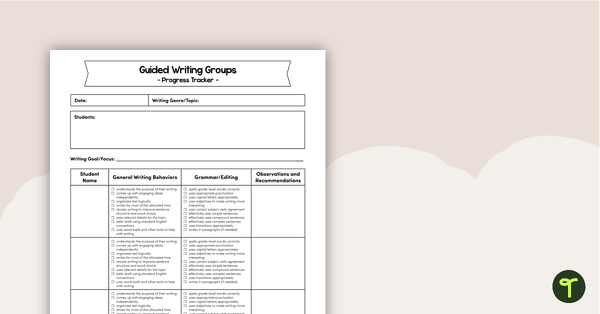
Guided Writing Groups - Progress Tracker
Track student progress during guided writing sessions with this template.
- Plus Plan
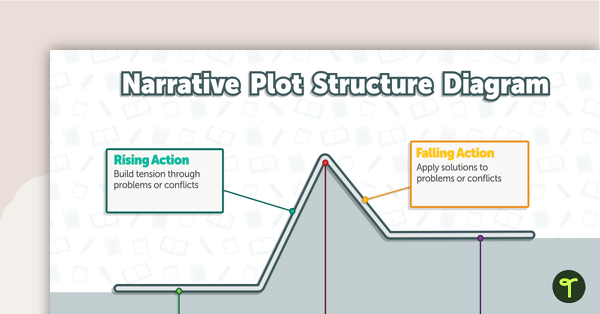
Narrative Plot Structure Diagram
A plot diagram for students to refer to when planning narrative writing.
- Plus Plan

Write a Cinquain Poem Worksheet
Set your students up for success when writing a cinquain poem with this set of scaffolded, easy-to-follow worksheets.
- Plus Plan
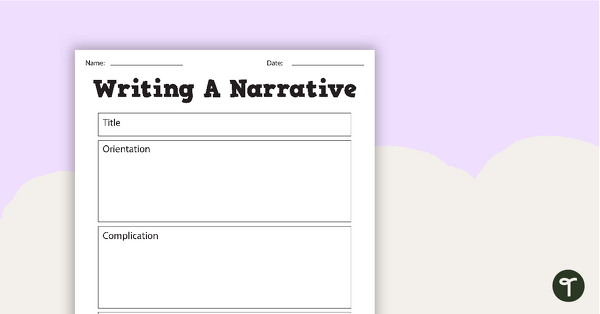
Narrative Writing Pack
A narrative writing teaching pack containing 9 worksheets and posters.
- Plus Plan
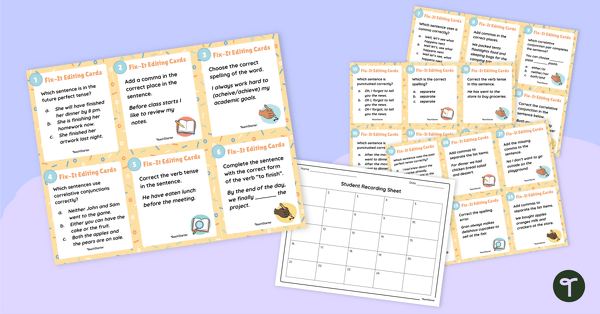
5th Grade Grammar Review Task Cards
Download these 5th grade grammar review task cards perfect for reading centers.
- Plus Plan
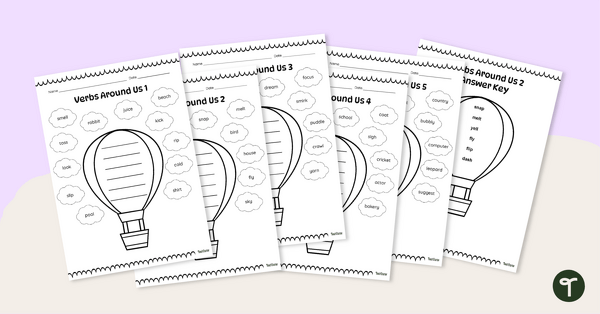
Verbs Around Us Worksheet Pack
Practice identifying verbs in a collection of words with this set of five verb worksheets.
- Plus Plan
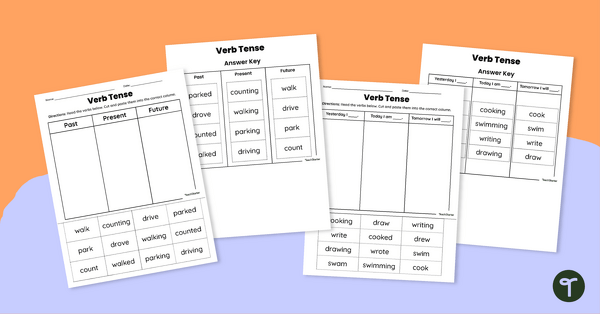
Cut and Paste Matching Verb Tense Worksheet
Practice identifying past, present and future tense in verbs using this set of cut and paste worksheets.
- Plus Plan
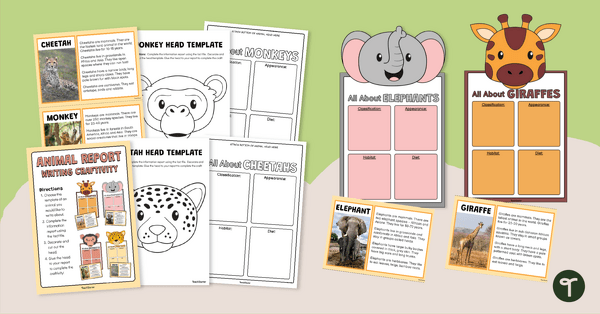
Animal Information Report – Writing Craftivity
Use this animal-themed writing and craft activity to teach your students in the primary grades about informative writing.
- Plus Plan
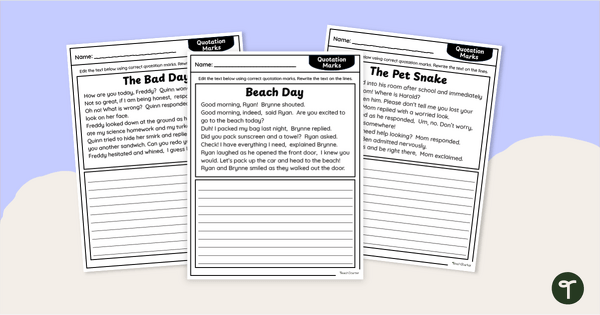
Paragraph Editing - Quotation Marks Worksheets
Practice using quotation marks to signify dialogue in text with a set of printable Paragraph Editing Worksheets.
- Plus Plan
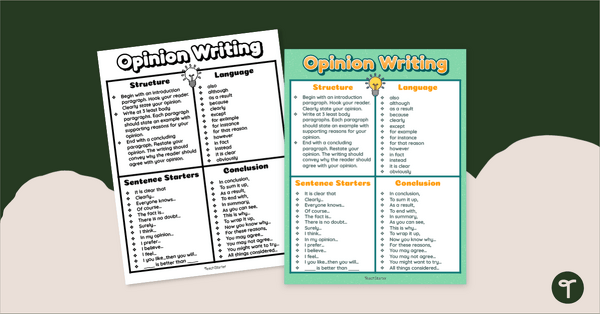
Opinion Writing Anchor Chart
Introduce younger students to the language associated with opinion writing with a printable opinion writing anchor chart.
- Plus Plan
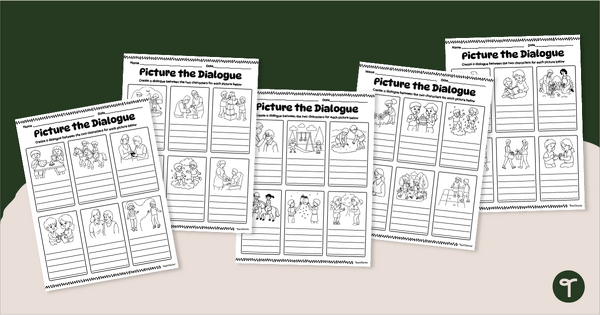
Picture the Dialogue - Punctuation Worksheet Pack
Improve students’ abilities to write dialogue using correct punctuation with a set of printable ‘Picture the Dialogue’ writing worksheets.
- Plus Plan
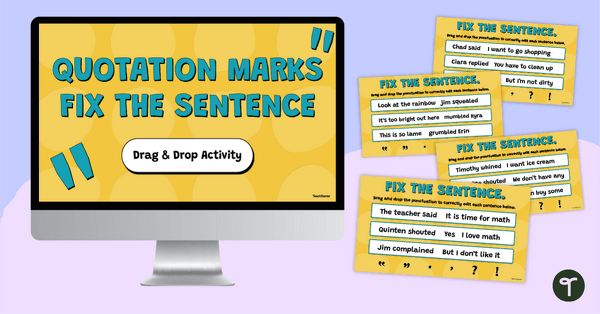
Fix the Sentence - Quotation Marks Practice Activity
Provide perfect punctuation practice with an engaging ‘Fix the Sentence’ Quotation Marks digital learning activity.
- Plus Plan
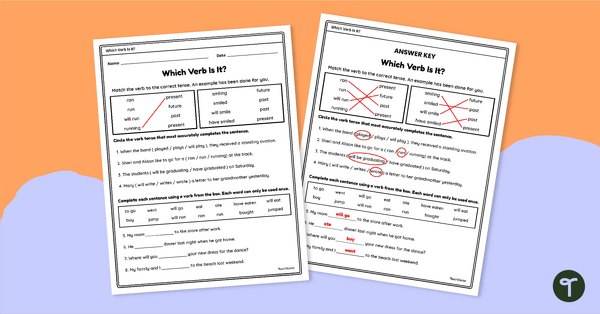
Which Verb Is It? Worksheet
Practice past, present, and future verb tenses with this easy to implement worksheet.
- Plus Plan
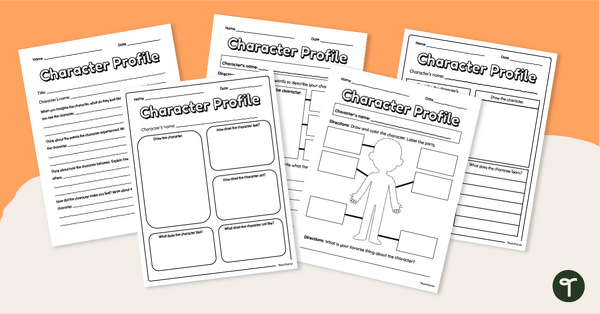
Character Profile Template Pack
Explore the personality, appearance, feelings and actions of a character with printable character profile templates.
- Plus Plan

Opinion Text Structure Anchor Chart With Annotations
Display this Opinion text with annotations to help students identify the structure of this type of text.
- Free Plan

Statement, Question, Command, Exclamation – Cut and Paste Worksheet
Identify statement, command, question, and exclamation sentences with a Types of Sentences Cut and Paste worksheet for 2nd grade.
- Plus Plan
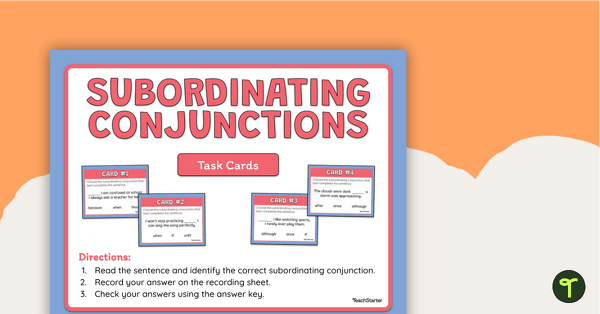
Subordinating Conjunctions Task Cards
Use this set of 24 task cards to help students practice identifying and constructing sentences using subordinating conjunctions.
- Plus Plan
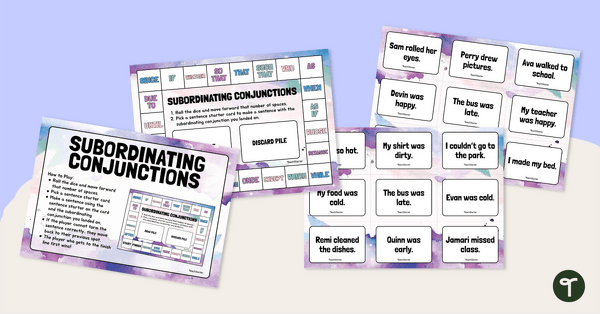
Subordinating Conjunctions Board Game
Use this set of 24 task cards to help students practice identifying and constructing sentences using subordinating conjunctions.
- Plus Plan
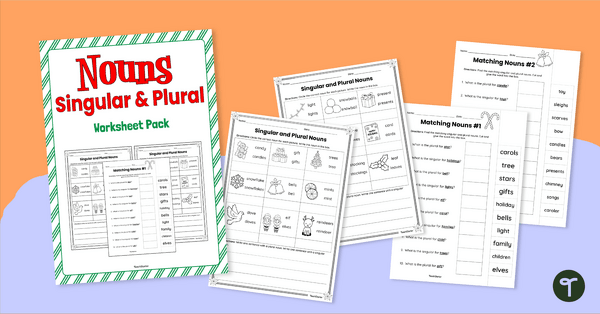
Christmas Singular and Plural Noun Worksheets
Review plural noun rules and add some holiday fun to your Language Arts lessons with a set of printable plural and singular noun worksheets.
- Plus Plan

Christmas Writing Center - Types of Sentences for 2nd Grade
Help your students answer “What Type of Sentence Is This?’ with a printable Christmas sorting activity on the 4 types of sentences.
- Plus Plan
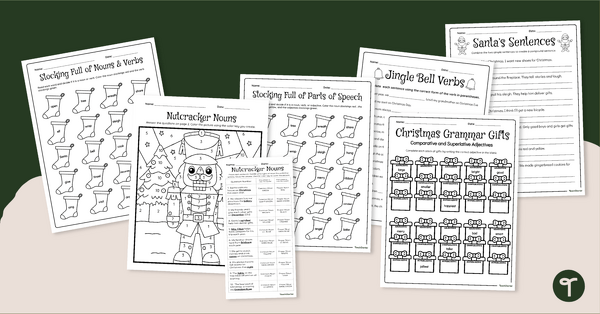
3rd Grade English Worksheets - Christmas Printables
Add some Christmas spirit to your December grammar lessons with a printable pack of Christmas-themed 3rd-grade English worksheets.
- Plus Plan

Roll to Create a Christmas Story - Writing Prompt
Roll the die to generate a fun Christmas writing activity with a roll-to-create Christmas worksheet.
- Plus Plan
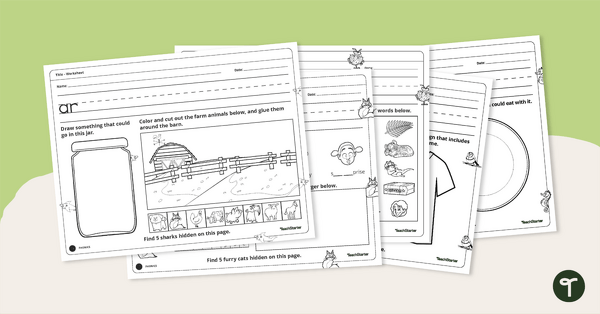
R-Controlled Digraphs Worksheet Pack
Practice writing and enhancing knowledge of r-controlled digraphs with this worksheet pack.
- Plus Plan
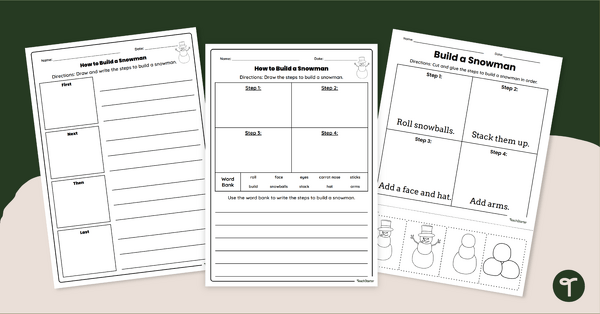
How to Build a Snowman - Procedural Writing Worksheets
Explain how to build a snowman with a pack of printable procedural writing worksheets
- Plus Plan
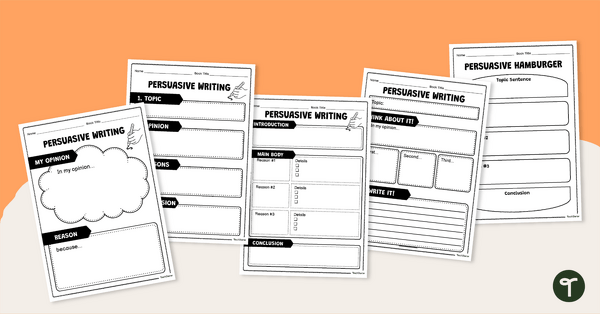
Persuasive Writing Graphic Organizer Pack
Help students gather their thoughts during persuasive writing with this differentiated set of graphic organizers.
- Plus Plan
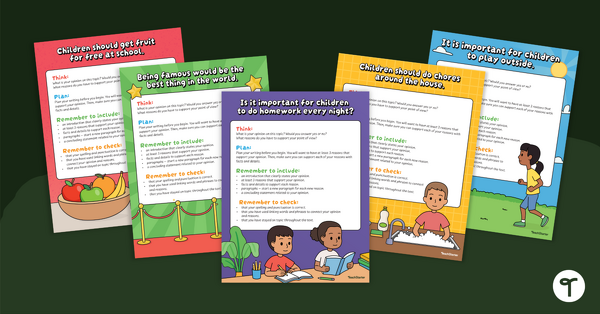
5 Opinion Writing Prompt Stimulus Sheets
A set of 5 writing prompt stimulus sheets with an opinion text focus.
- Plus Plan
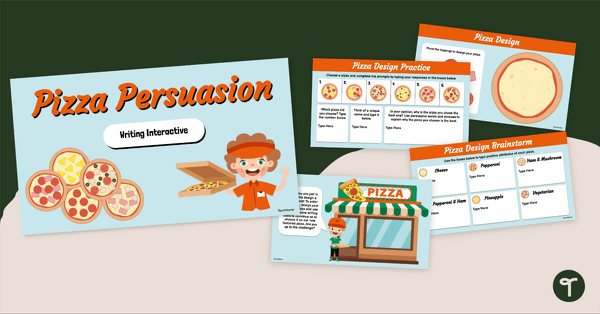
Persuasive Writing Interactive (Design Your Own Pizza)
Explore persuasive writing with this fun pizza-themed interactive activity.
- Free Plan

Free Opinion Writing Bulletin Board Banner
Create a fun persuasive writing classroom display with these fun looking display banners.
- Plus Plan
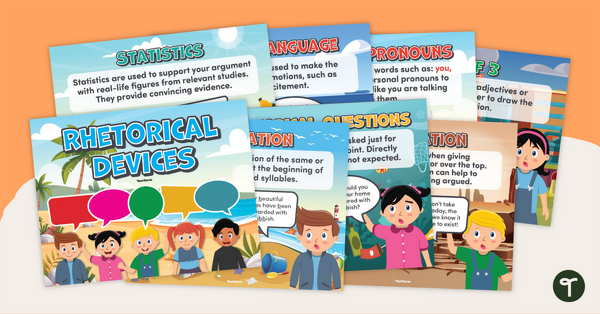
Rhetorical Devices Anchor Charts
Support students to improve their persuasive writing with these rhetorical devices anchor charts.
- Free Plan

Time Order Words - Transition Words Word Wall
Help your students demonstrate the passage of time in their writing with 35 time-order transition word cards.
- Free Plan
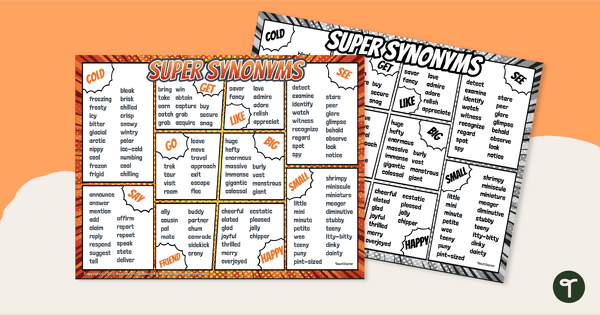
Super Synonyms List
Boost your students’ vocabularies with a synonyms list to reference in their daily writing lessons.
- Plus Plan
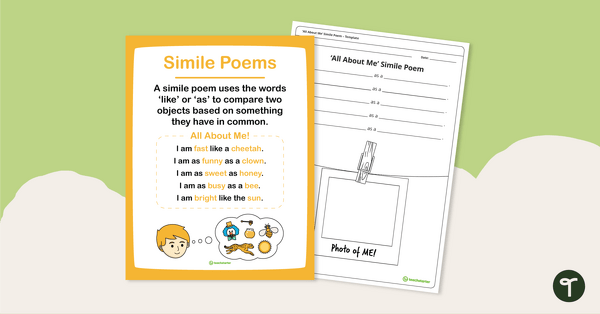
All About Me! Simile Poem Poster and Worksheet
Get to know your students and explore poetry at the same time with this simile poem scaffolding template.